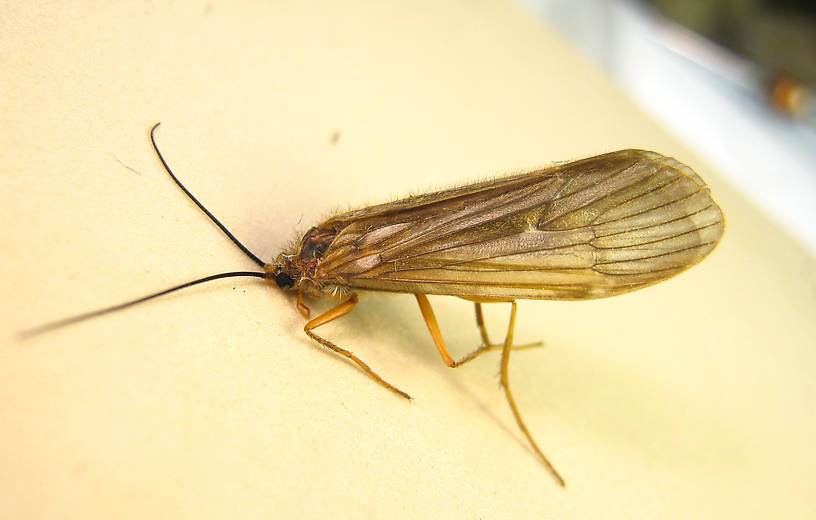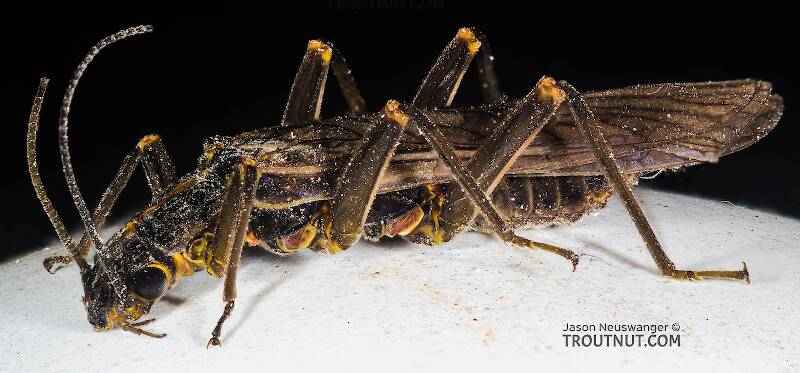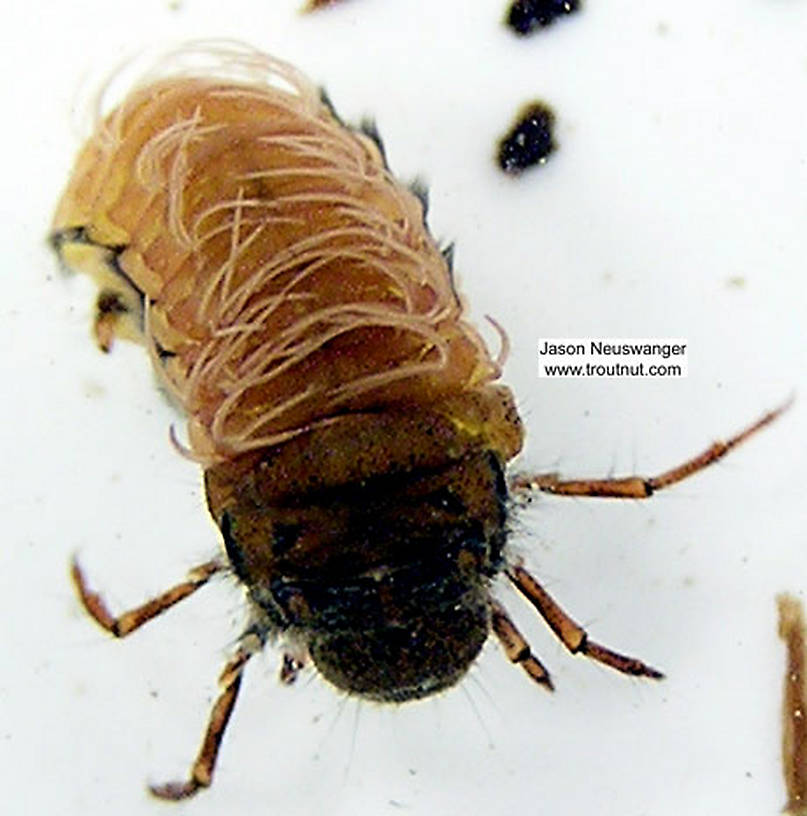
Blue-winged Olives
Baetis
Tiny Baetis mayflies are perhaps the most commonly encountered and imitated by anglers on all American trout streams due to their great abundance, widespread distribution, and trout-friendly emergence habits.
Featured on the forum

Troutnut is a project started in 2003 by salmonid ecologist Jason "Troutnut" Neuswanger to help anglers and
fly tyers unabashedly embrace the entomological side of the sport. Learn more about Troutnut or
support the project for an enhanced experience here.
Giant Sedges
This common name refers to only one family. Click its scientific name to learn more.
Caddisfly Family Limnephilidae
These are very rarely called Giant Sedges.
This huge family appropriately contains huge caddisflies. Many of its genera are important, but the western genus Dicosmoecus (the Giant Orange Sedge or October Caddis) is especially important as a big-trout hatch.
Limnephilidae contains so many species that it is difficult to generalize about them all. LaFontaine commented on the task in Caddisflies:
I recommend learning which genera or species are prevalent in your area and studying them specifically.
Limnephilidae contains so many species that it is difficult to generalize about them all. LaFontaine commented on the task in Caddisflies:
The fact that fly fishermen need broad principles of biology, not a collection of exceptions, makes it difficult to handle this family.
I recommend learning which genera or species are prevalent in your area and studying them specifically.

This specimen is 26 mm.
- Entoman
- Entoman
See 37 more specimens...
References
- LaFontaine, Gary. 1981. Caddisflies. The Lyons Press.



